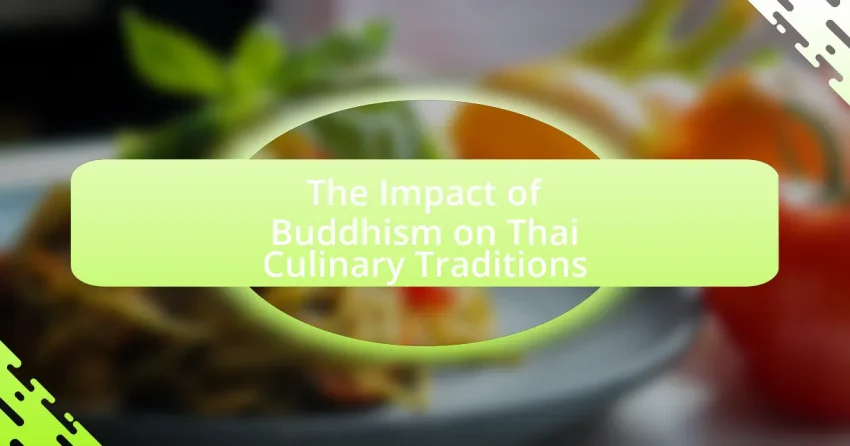The article examines the influence of Thai cinema on popular restaurant dishes, highlighting how films like “Eat Pray Love” and “The Hangover Part II” showcase traditional Thai recipes, thereby increasing their demand in both local and international dining. It discusses the role of visual storytelling in enhancing food appreciation and consumer behavior towards Thai cuisine,…
Cultural Influences
Welcome to the “Cultural Influences” category! Here, you will explore how culture shapes our thoughts, behaviors, and lifestyles. Our collection of articles dives into various aspects of cultural dynamics, from traditions and art to food and languages. Each piece offers insights into how different cultures interact and influence one another, creating a rich tapestry of human experience.
As you navigate through this category, expect to find discussions on cultural symbols, cross-cultural interactions, and the impact of globalization. You’ll gain a deeper understanding of how culture affects identity and community. Whether you’re curious about a specific culture or interested in the broader implications of cultural exchange, our articles will enlighten and inspire you. Enjoy your journey through the fascinating world of cultural influences!
The Impact of Social Media on the Popularity of Thai Dishes
The article examines the significant impact of social media on the popularity of Thai dishes, highlighting how platforms like Instagram and TikTok enhance visibility and consumer engagement through visually appealing content. It discusses the transformative role of social media in discovering Thai cuisine, the influence of food influencers, and the economic implications for Thai restaurants….
The Importance of Thai Hospitality in Restaurant Service
The main entity of the article is Thai hospitality in restaurant service. The article explores the significance of Thai hospitality, characterized by warmth, respect, and attentiveness, in enhancing customer satisfaction and loyalty within the restaurant industry. It defines Thai hospitality through cultural concepts such as “nam jai” and “sanuk,” highlighting how these principles manifest in…
The Impact of Buddhism on Thai Culinary Traditions
The article examines the profound influence of Buddhism on Thai culinary traditions, highlighting the promotion of vegetarianism and mindful eating practices rooted in Buddhist principles such as ahimsa, or non-violence. It discusses how Buddhist rituals, festivals, and the practice of almsgiving shape dietary customs and food preparation methods in Thailand, leading to a rich variety…
The Evolution of Thai Cuisine in the Global Restaurant Landscape
The article examines the evolution of Thai cuisine within the global restaurant landscape, highlighting its transformation from regional dishes to a widely celebrated culinary tradition. It traces the rise of Thai food’s popularity since the 1980s, driven by the establishment of Thai restaurants in major cities and the influence of food media. Key characteristics of…
How Thai Restaurants Utilize Local Ingredients to Honor Cultural Roots
Thai restaurants play a significant role in honoring cultural roots by incorporating local ingredients into their menus. This practice enhances the authenticity of traditional dishes while supporting local agriculture and reducing environmental impact. Key ingredients such as lemongrass, Thai basil, and various chilies are sourced from nearby farms, reflecting regional agricultural practices and seasonal availability….
The Cultural Importance of Sharing Meals in Thai Dining Customs
The article explores the cultural significance of sharing meals in Thai dining customs, emphasizing its role in fostering community, strengthening relationships, and reflecting values of generosity and hospitality. It highlights the practice of communal eating, where dishes are served family-style, symbolizing unity and togetherness. The article also discusses how sharing meals embodies respect and cooperation,…
How Thai Street Food Influences Fine Dining Experiences
The article examines the influence of Thai street food on fine dining experiences, highlighting how bold flavors, innovative techniques, and fresh ingredients from street food inspire upscale culinary creations. It discusses the key characteristics of Thai street food, including its vibrant flavor profiles and casual presentation, and contrasts these with the refined techniques and subtle…
Cultural Significance of Thai Herbs and Spices in Restaurant Dishes
The article explores the cultural significance of Thai herbs and spices in restaurant dishes, highlighting their role in embodying Thailand’s rich culinary traditions and regional diversity. Key ingredients such as lemongrass, galangal, and Thai basil are essential for creating the distinct flavors that define Thai cuisine, reflecting historical influences and the philosophy of balance in…
How Thai Restaurants Navigate Cultural Appropriation in Global Markets
Thai restaurants face significant challenges regarding cultural appropriation in global markets, defined as the unauthorized use of Thai culinary traditions by non-Thai entities, leading to misrepresentation and dilution of authentic culture. Key elements include the unauthorized use of traditional recipes and the commercialization of Thai dishes, which can undermine cultural integrity and economic viability for…









